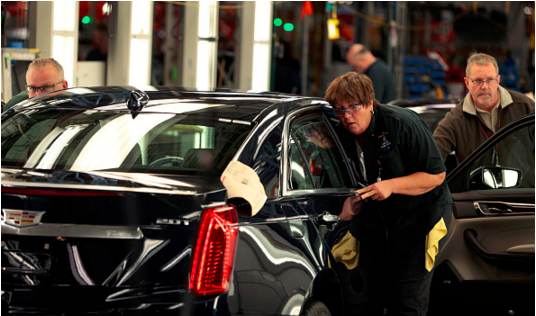Photo of the Month: October 2015

In October, the United Auto Workers union fought for, and won, better benefits for its members at Fiat Chrysler Automobiles (FCA) and General Motors (GM). The first deal was made with Chrysler after its 40,000 workers threatened to go on strike. The four-year contract includes wage raises – entry-level workers will start at $17 per hour and earn a top wage of $29 per hour after eight years – as well as a commitment from Fiat Chrysler to invest $5.3 billion over the next four years in its U.S. plant. FCA CEO Sergio Marchionne claims the contract would cost the company nearly $2 billion more over the life of the contract.
The 52,700-strong workforce at General Motors got an even a sweeter deal towards the end of October, which includes doubling the signing bonus and phasing out the "two-tier" pay system between veteran workers and newer hires.
In general, things are improving for the auto industry. In August, the unemployment rate in the Detroit metro area touched a 15-year low last month while joblessness in greater Motor City is declining at twice the pace of the country as a whole:
The improvement is at least partially tied to the resurgent auto industry. The last time joblessness was this low in Motown, in 2001, was the last time Americans purchased more than 17 million vehicles in a year. Car sales have accelerated this year and are again near that historic pace.
The NYTimes hopes this will increase pressure on the non-union foreign carmakers in the United States and suppliers where new hires could be paid as little as $10 per hour. It may lead to broader reforms as well:
The new contract implicitly defines $30 an hour as a decent middle-class wage. That is well above the recent average of $21.08 for most workers, but below the nearly $32 that would be the norm if wages had kept pace with net labor productivity in recent decades. Clearly, unions can lift middle-class wages to a point, but more needs to be done. Higher federal spending on necessary public projects would lift pay by creating jobs; stricter laws on worker classification would ensure that employees are not wrongly denied overtime and benefits. In general, Democrats support such proposals, Republicans don’t.
Click here for more monthly photos on people and issues we care about.